Explore The Fascinating Rail Museum Mysore On Your Next Trip In 2025
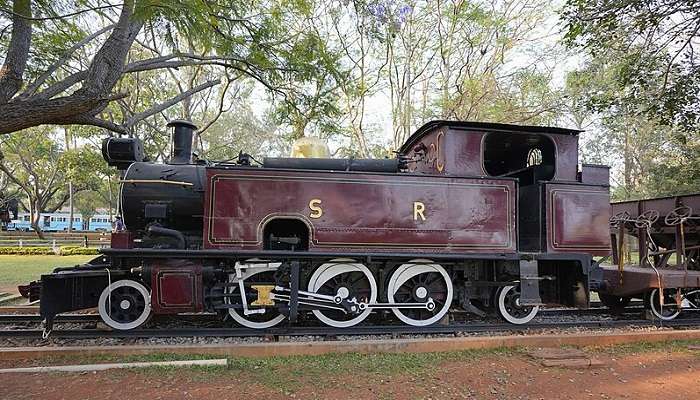
Hop on a once-in-a-lifetime adventure as we explore the fascinating stories of steel, steam, and grandeur at Rail Museum Mysore! Located in the centre of historical significance, this collection of awe-inspiring trains guarantees to transport you on an enchanting journey through time and railways. From the grand rule of royal carriages to the clever advancement of railway technology, each display calls out the charm of past times and present wonders. Get your ticket to the past and join in for a memorable journey you will not easily forget! Get on board, Everyone!!
Discover the Treasures of Rail Museum Mysore
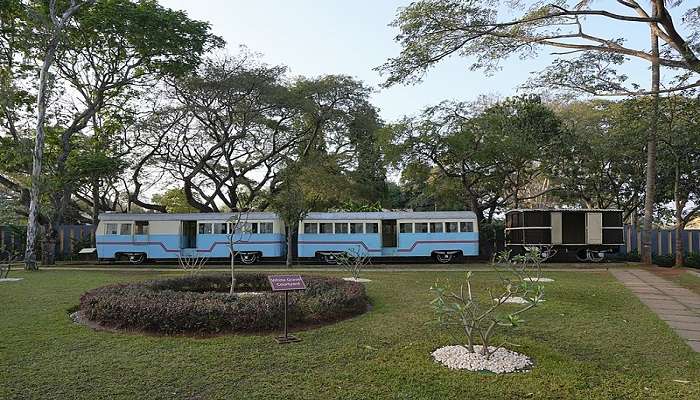
Established by Indian Railways in 1979, the Mysore Rail Museum displays the rich history and growth of Indian railways. Situated on Krishnaraja Sagar Road, opposite the Central Food Technology and Research Institute, this museum is the second of its kind after the National Railway Museum in Delhi. The Rail Museum Mysore showcases visitors with an engaging exploration of India’s railway history and presents a variety of trains, photos, and paintings illustrating the evolution of railways in India. The museum offers a detailed view of the technological progress and cultural importance of the Indian railways, showcasing vintage trains, railway signals, and lighting. Furthermore, the kids visiting can have a joyful experience on the museum’s mini-train run by batteries, enhancing their educational visit with enjoyment and technology.
Must Read: Kesare Village
Explore Vintage Locomotives at Rail Museum
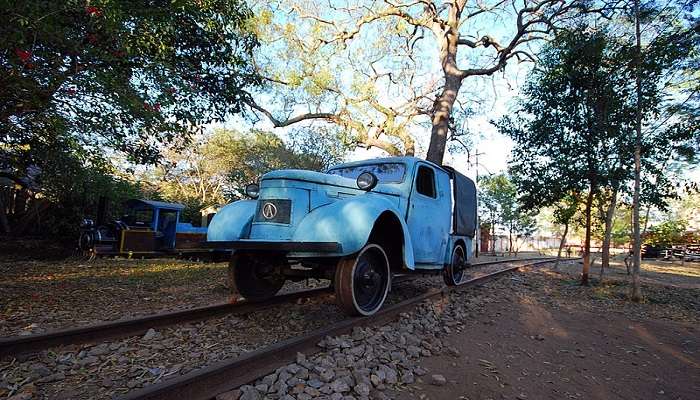
The Mysore Rail Museum provides an engaging experience of the past of railways, showcasing an impressive assortment of old-fashioned trains and luxurious carriages used by royalty. One of the main attractions is the Chamundi Gallery, which features a variety of images and paintings depicting the history of railways. The Sri Ranga Pavilion showcases two lavish royal coaches that were previously utilized by the Maharaja of Mysore, giving a peek into the extravagant travel style of the royals. The Maharani’s saloon carriage from 1899 is remarkable, equipped with a kitchen, dining car unit, and royal toilet. Another intriguing display is the Austin Railway Car, which was initially a 1925 road car converted into a railcar, highlighting the creativity of railway workers. It is remarkable that some of these old trains are still functioning, enhancing the museum’s appeal as a vibrant symbol of India’s railway history.
Rare Artefacts At Rail Museum
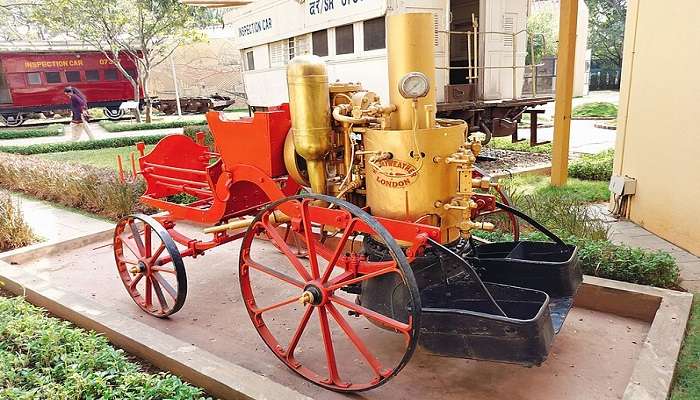
The Rail Museum in Mysore, Karnataka, gives a sneak-peak into the process of development of railways in India through a variety of rare artifacts. Scarcely found items like wooden pillars and doors from the Old Srirangapatna railway station provide a nostalgic experience of past times. Tourists have the opportunity to admire artifacts such as the manually operated steam water pump from 1934 and a crane that dates back to 1885, which demonstrate the skill and artistry of railway engineering. The museum contains various lights, tickets, ticketing machines, signal signs, clocks, photographs, and paintings, showcasing multiple stages of railway progress in India.
Suggested Read: Places To Visit Near Mysore
Royal Coaches and Vintage Locomotives
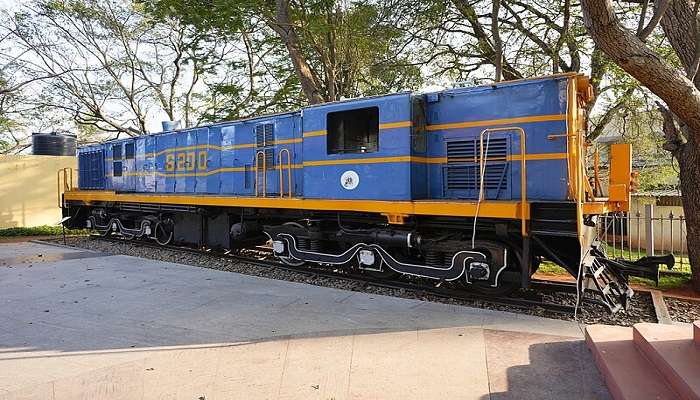
The Mysore Railway Museum showcases an impressive array of vintage trains and carriages, offering visitors an interactive journey through the evolution of railway travel. A key feature is the ES 506 4-6-2 locomotive, showcasing the power and elegance of historic steam engines. The museum showcases the unique Austin Railway Car, a converted 1925 Austin model that exemplifies advancements in railway travel. Visitors can appreciate the YP #2511 locomotive, produced by Telco in 1963, highlighting advancements in train technology from the mid-1900s. Moreover, the museum proudly displays two royal carriages used by the Maharajas of Mysore, providing a glimpse into the opulent journeys of the Wodeyar rulers—essential exhibitions at the museum.
Timings, Fee, And How To Reach
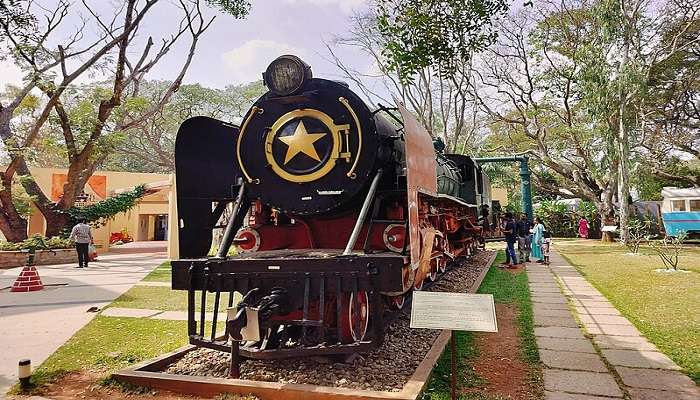
Located in the center of Mysore, the Railway Museum provides an intriguing exploration of the Indian railway’s past. This museum is open daily from 10:00 AM to 5:30 PM, except on Tuesdays, and invites guests to discover its impressive array of antique trains, regal carriages, and train-related artefacts. Admission costs a reasonable amount of Rs. Fifty rupees are for adults, and the same amount is for children. Additional charges apply for children to use cameras and ride toy trains, costing $20. Conveniently situated close to Mysore Railway Station, only 3 km from the city center, the museum is easily reachable via taxi, auto-rickshaw, or city bus. A trip to the Mysore Railway Museum offers a rewarding experience for history buffs and train enthusiasts, whether marveling at royal carriages or exploring the development of railway technology.
Suggested Read: Venugopala Swamy Temple in Mysore
Generational Legacy of Rail Museum Mysore
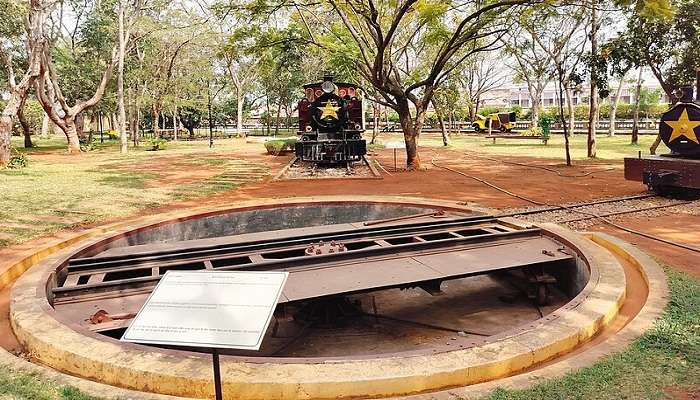
The Mysore Railway Museum serves as an active proof of the long-lasting connection between technology and human creativity. The old-fashioned rail cars of Mysore’s royal elite contrast sharply with new models, reflecting the constantly evolving nature of progress. In addition to its stationary exhibits, the museum acts as a centre for education, providing guided tours and informative displays for students and researchers. By hosting unique events and workshops, the museum brings its collections to life, guaranteeing visitors a memorable and interactive experience. The museum connects the past and present of Indian railways by taking visitors on a captivating journey, resonating with the echoes of the nation’s vibrant locomotion history through the clanking of wheels. The Mysore Railway Museum is a must-visit for history buffs, tech lovers, or those who enjoy train journeys, offering a captivating journey through time and railways.
Further Read: Sand Museum Mysore
Hope you enjoyed reading this Rail Museum travel guide. Yet, the words may not do justice to capture the true essence of this remarkable museum. It’s a place that needs to be seen and experienced, deserving all your attention. To plan your trip to Mysore and get in touch with us for a hassle-free and memorable touring experience.
For our editorial codes of conduct and copyright disclaimer, please click here.
Cover Image Credit: Ingo Mehling for Wikimedia Commons
Frequently Asked Questions About Rail Museum Mysore
How much does it cost to enter the Rail Museum in Mysore?
Adults are required to pay an entry fee of Rs. Fifty for each person and child, the price is also Rs. Fifty for each individual. Rs. 20 is charged for the use of a stationary camera. Rs. 30 for a video camera, as well as ten units to go on a toy train ride.
What are must-see exhibits at Rail Museum Mysore?
ES 506 locomotive, the Maharani's Saloon carriage, and the vintage trains used by the Maharajas of Mysore are some of the must-visit destinations at Rail Museum in Mysore, Karnataka.
How much time is required to see the Rail Museum Mysore?
Plan to spend approximately 2 hours at the Railway Museum in Mysore as you will need time to discover the old train engines, regal carriages, unique items showcased at the exhibits. Do take a trip on the small train and understand the locomotive journey of India.
How should I reach the Rail Museum Mysore?
The Railway Museum in Mysore is accessible easily. It is located very close to the Mysore Railway Station which makes it only 3 km away from the city's centre. You can access the museum via taxi, auto-rickshaw, or city bus.
How should I plan my day when in Mysore?
These are the must-visit places in Mysore:
- Chamundeshwari Temple
- Mahishasur Statue
- Nandi Bull Temple
- Sand Museum
- Wax Museum
- Karanji Lake
- Mysore zoo
- Mysore Palace
People Also Read:
Auckland War Museum Museum Of Siam Nizam Museum

Passionate Marketing Student with a flair for storytelling, eagerly embarking on a journey within the vibrant world of travel. Excited to merge analytical acumen with creative skills to elevate the editorial landscape of the travel industry.











